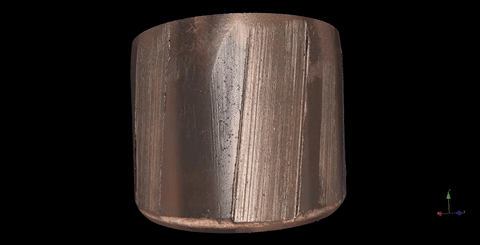Matching a bullet to the gun from which it was fired is often the key component in solving crimes. But new technology aims to improve future forensic examinations of crimes involving guns.
“Firearm and toolmark analysis has been around since the 1920s,” said Alan Zheng, a mechanical engineer at the National Institute of Standards and Technology.
“It’s a science where a trained examiner can take a look at two fired bullets or two fired cartridge cases, and try to link it back to a particular firearm.”
Zheng said three-dimensional technology will modernize how firearm and toolmark analysis can be done.
When a bullet or cartridge case is recovered at a crime scene and the suspect’s firearm can be found, the gun can be test-fired to compare whether marks on the bullet or cartridge case match grooves in the barrel of the gun.
“On the bullet, they’re looking for striation patterns, which essentially is parallel lines. Each barrel has been manufactured or cut with rifling patterns, to help the bullet rotate as it comes out of the barrel, which improves the accuracy,” Zheng said. “Throughout that cutting process, you’re leaving a lot of random features inside that barrel, so it’s almost like a fingerprint of that particular barrel.”
Currently, forensic examiners have to have the bullets or cases in hand “that allows them to view two different bullets, side by side, within one viewfinder, and try to match up the patterns,” Zheng added.

New software enables microscopes to produce 3D models, or virtual copies, of the bullets. Computer algorithms then compare the microscopic features of the two virtual bullets to measure how similar they are.
“It’s extremely accurate,” said Zheng. “You can pick out features down in the micron range, which is less than a hundredth of the width of a human hair.”
The technology can help examiners get a better look at what they’re investigating.
“Within the computer software, you can adjust lighting and rotate the two different 3D data sets around,” Zheng said.
A major improvement in the process is that the forensic analysis and verification can be done virtually. The Federal Bureau of Investigation and Bureau of Alcohol, Tobacco, Firearms and Explosives use the 3D technology, but most crime labs across the country do not.
“So now you can take that 3D data that you scanned, and send it across to another lab, and a separate examiner can do that verification, without having any access to the physical samples,” said Zheng.
As with any new technology being used in solving crimes, courts will have to be convinced that the technology is reliable.
“Typically, when new technology is utilized in forensics, there will be one landmark case that sets the precedent,” Zheng said.
In 1911, fingerprints were first accepted by U.S. courts as a reliable means of identification. Courts began allowing DNA analysis to be admitted as evidence in the late 1980s.
Zheng expects the same will happen with 3D forensics technology.
“They go in and look at the foundations of the science. The judge has to make a determination whether the science is valid,” he said.
The Organization of Scientific Area Committees for Forensic Science, which is administered by NIST, has added two new standards to its Registry of Approved Standards. The standards will provide guidance for crime labs that implement the 3D methods.








